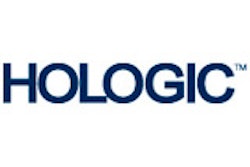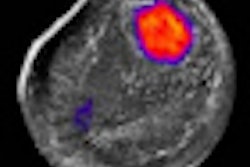An advisory panel of the U.S. Food and Drug Administration (FDA) on September 24 is scheduled to review a regulatory application from Hologic of Bedford, MA, for a 3D digital breast tomosynthesis (DBT) mammography system.
Tomosynthesis-based mammography systems use a moving x-ray tube head to acquire multiple projections of the breast that can be reconstructed into 3D images. Hologic is hoping to become the first company to sell a 3D tomosynthesis system on the U.S. market; 3D tomo units are already being sold in Europe.
Hologic has filed a premarket approval (PMA) application with the FDA for its Selenia Dimensions full-field digital mammography (FFDM) system with 3D tomosynthesis capability. The FDA's radiological devices panel of the Medical Devices Advisory Committee is scheduled to review the PMA application on Friday.
In documents released ahead of the meeting, the FDA noted that it will review data from several clinical studies performed in support of the PMA that compare 2D FFDM mammography alone to 3D FFDM -- an initial study (Reader Study 1), along with Reader Study 2 and an additional follow-up study. The latter studies were performed to address what the FDA said were deficiencies in the original research.
The FDA said that it is seeking advice from the advisory panel on the potential risks versus the benefits of using 2D FFDM plus DBT in the screening and diagnosis of breast cancer. The agency noted that in the first study, use of DBT increased the area under the receiver operator characteristics curve (AUC) from 0.821 for 2D digital mammography to 0.894 with 3D DBT.
DBT also significantly reduced the recall rate for screening participants who did not have cancer: Recalls for these individuals went from 51.5% with 2D FFDM to 12.9% with DBT plus 2D in the first clinical study. In the second study, the recall rate went from 44.2% to 24.0%. The recall rate for patients with cancer dropped from 87.2% to 80.4% in the first study, and remained the same at 88% in the second study.
In the documents the FDA released ahead of the meeting, the agency said that it has concerns about the training of readers used in the second clinical study, as well as the reuse of cancer cases from the first study in the second study, which could bias results in favor of DBT. The FDA also expressed concern about the decline in the recall rate for patients with cancer in the first study.
At the end of the panel meeting, members will vote on three questions relating to the safety and efficacy of Selenia Dimensions, and whether the product's benefits outweigh its risks. The panel could potentially offer separate recommendations for use of the DBT system for both screening and diagnostic applications; the panel's recommendations are not binding on the FDA's final review of the product.
Related Reading
Hologic completes Sentinelle acquisition, August 6, 2010
Hologic grows sales, though profit slips, August 2, 2010
Hologic secures panel date for tomo PMA, July 27, 2010
Hologic to buy breast MR firm Sentinelle for $85M, July 6, 2010
Hologic's Selenia nets EUREF certification, June 23, 2010
Copyright © 2010 AuntMinnie.com



















